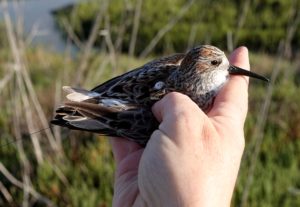The tools scientists use to study pelagic marine life have come a long way. Now, with the use of advanced computing technologies, scientists are pondering the relationships hidden in data beamed by the animals themselves from electronic sensors and satellite tags. In a project called Tagging of Pacific Pelagics (TOPP), 22 species of marine predators are helping scientists build unprecedented models of Pacific Ocean ecosystems.
The ten-year pilot project, which involves an array of universities, public agencies, and nongovernmental organizations, is a component of the Census of Marine Life, an international project to study what lives, has lived, and will live in the world’s oceans.
To make the information easily accessible to the public, the project recently launched a new web site with interactive tools to track individual animals. Visit www.toppcensus.org and click on the animal icons. Brightly colored lines on interactive maps let you track individual animals each day when the tags are transmitting. This summer, you can follow migrating humpback and blue whales and northern elephant seals foraging thousands of miles offshore from their molting grounds along the California coast. According to the Monterey Bay Aquarium’s Diane Richards, a TOPP web content developer, many of the animals in the project occupy a Bay Area habitat at one time in their life cycle. One of the animals being tracked is the critically endangered leatherback sea turtle, which can grow to over eight feet long, weigh up to 1,500 pounds, and dive over 3,000 feet. This ancient pelagic reptile forages along the coasts of northern California, Oregon, and Washington, including the waters west of Monterey and San Francisco.

.jpg)



